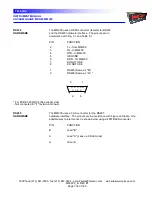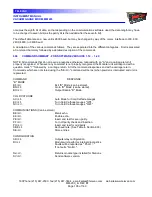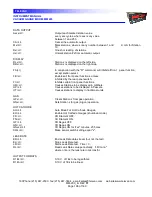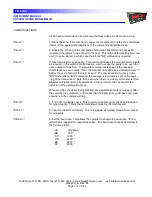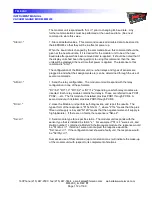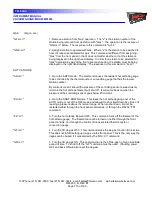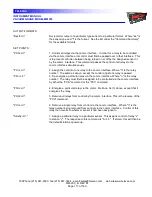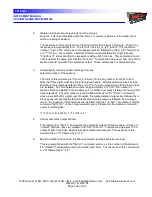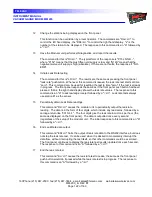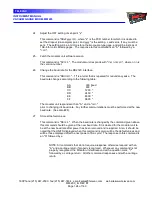
INSTRUMENT MANUAL
VACUUM GAUGE MODEL MM200
160Phone:(215) 947-2500 fax:(215) 947-7464 e-mail:[email protected] web site:www.televac.com
MM-200_im REV M
Page 111 of 160
TELEVAC
COMMUNICATIONS
All of these commands can be stored so that they will be in effect at power up.
"BE<cr>"
1. Blank the echo. This command causes the modular unit not to echo commands.
However, the appropriate responses to the commands will still be given.
"EE<cr>"
2. Enable the echoing of the command characters. This command causes all
command characters to be echoed to the host. This is the default setting for a new
unit. It can be stored, in which case the stored "BE" command is canceled.
"PE<cr>"
3. Insert and test for even parity. This command causes the modular unit to insert,
as required, in the eighth data bit location, a bit to cause the parity to be even (an
even number of one bits). The modular unit also tests to see if the received
characters have even parity, if not, the modular unit sends an exclamation mark "!"
before the next character that is to be sent. The only exception to this is in the
"BN" mode, after a "BO" command, the carriage return mark is sent at the begin-
ning of the data stream. Note that, even when there is a parity error detected, the
modular unit responds to all commands in the normal manner, except for the
inclusion of the exclamation mark.
Whenever the echoes are being blanked, the exclamation mark is only sent after
the command is completed, and means that the parity error could have occurred
anywhere in the command string.
"PF<cr>"
4. Turn OFF the parity check. This command cancels parity check and insertion
for type of parity. This is the normal default mode for the modular unit.
"PO<cr>"
5. Insert and test for odd parity. This is the same as number three above, except
for odd parity.
"SBll<cr>"
6. Set the baud rate. This allows the operator to change the baud rate. "ll" is a
letter that is repeated for redundancy sake. The baud rate changes according to
the following table:
AA
300 baud
BB
600 "
CC
1200 "
DD
2400 "
EE
4800 "
FF
9600 "







